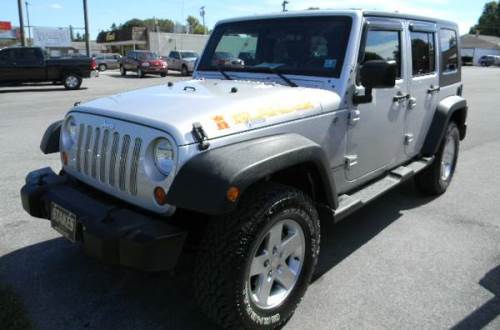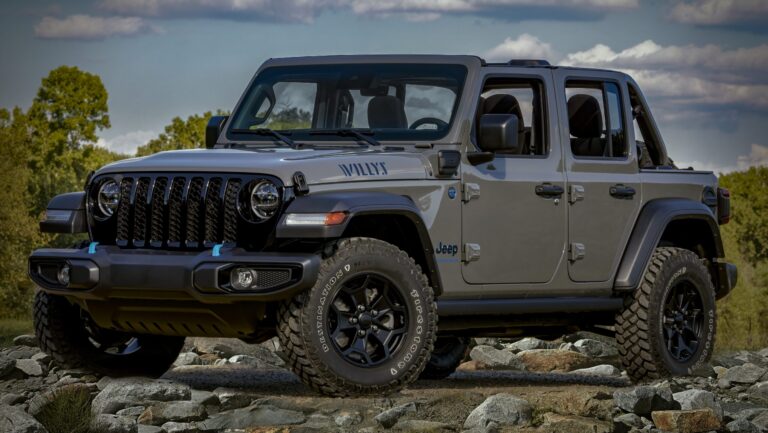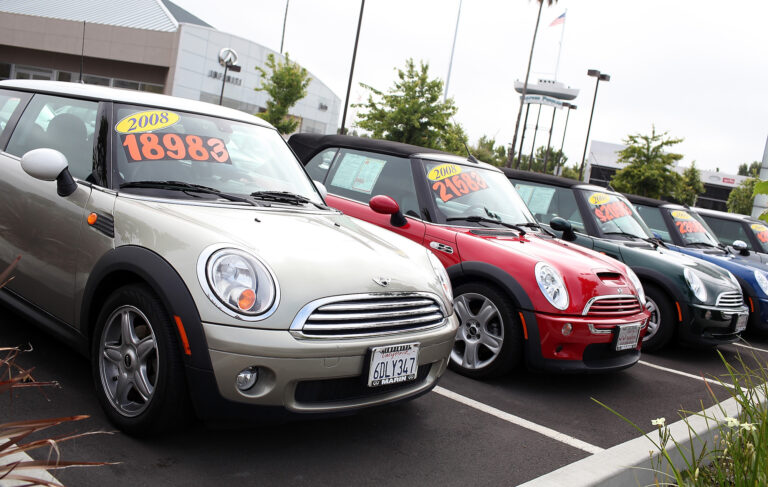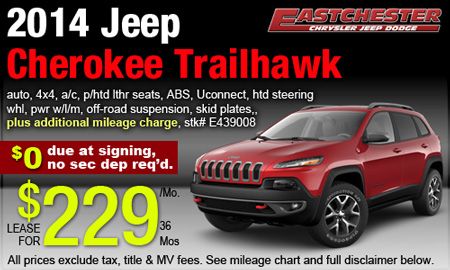Jeep Comanche Trucks For Sale: Your Comprehensive Guide to Finding and Owning an Iconic Classic
Jeep Comanche Trucks For Sale: Your Comprehensive Guide to Finding and Owning an Iconic Classic jeeps.truckstrend.com
The automotive landscape is littered with vehicles that come and go, but every so often, a model emerges that transcends its production run to become a true icon. The Jeep Comanche, produced from 1986 to 1992, is one such vehicle. More than just a pickup truck, the Comanche (designated internally as the MJ) represented a unique blend of Jeep’s legendary off-road capability with the practical utility of a compact truck. Built on the highly successful XJ Cherokee platform, the Comanche offered a unibody front end mated to a traditional ladder frame in the rear, creating a vehicle known for its surprising strength, agility, and distinctive style.
Today, nearly three decades after its last unit rolled off the assembly line, the Jeep Comanche is experiencing a significant resurgence in popularity. Enthusiasts, collectors, and those simply seeking a rugged, capable, and uniquely charming truck are actively searching for Comanches for sale. However, buying a vintage vehicle like the Comanche requires a discerning eye and a deep understanding of its quirks and common issues. This comprehensive guide will navigate you through everything you need to know about finding, evaluating, and owning a Jeep Comanche, ensuring your pursuit of this classic truck is both informed and successful.
Jeep Comanche Trucks For Sale: Your Comprehensive Guide to Finding and Owning an Iconic Classic
Why the Jeep Comanche Remains a Coveted Classic
The allure of the Jeep Comanche is multifaceted, stemming from its unique design, robust engineering, and undeniable heritage. When AMC (and later Chrysler) decided to build a pickup truck based on the immensely popular XJ Cherokee, they created something truly special. Unlike many compact trucks of its era, the Comanche benefited from the Cherokee’s coil-sprung front suspension and unibody construction, giving it superior ride quality and handling characteristics compared to traditional body-on-frame pickups. Yet, the rear half incorporated a conventional C-channel frame to support the bed, providing the rigidity needed for hauling and towing.
This hybrid construction resulted in a vehicle that was both surprisingly comfortable on the road and exceptionally capable off it. Comanches were offered with a range of engines, but it’s the legendary AMC 4.0-liter inline-six that cemented its reputation for reliability and power, especially when paired with a robust 4×4 drivetrain. Its compact footprint made it maneuverable, while its truck bed offered practical utility for work or play.
Beyond its mechanical merits, the Comanche possesses a distinct aesthetic appeal. Its clean lines, classic Jeep grille, and purposeful stance have aged gracefully, making it a head-turner even today. As fewer and fewer clean examples remain, the Comanche’s status as a collector’s item continues to grow, driving up demand and value for well-preserved or expertly restored units. For many, it represents the last true "Jeep pickup" before the modern Gladiator, embodying a simpler, more rugged era of utility vehicles.
Understanding the Comanche Variants: Engines, Drivetrains, and Trims
To make an informed purchase, it’s crucial to understand the different configurations the Jeep Comanche was offered in during its relatively short production run.
Engine Options:
- 2.5L AMC 150 I4: The standard engine, initially carbureted (1986-1987) and later fuel-injected (TBI, 1987-1992). Adequate for light duty, but often considered underpowered, especially in 4×4 configurations.
- 2.8L GM LR2 V6: Offered briefly in 1986. This engine is generally the least desirable due to its lower power output and reputation for reliability issues. Most enthusiasts avoid models with this engine.
- 2.1L Renault J8S I4 Diesel: A rare option available in 1986. While offering excellent fuel economy, parts availability can be a significant challenge today.
- 4.0L AMC 242 I6: The undisputed king of Comanche engines. Introduced in 1987, this inline-six is renowned for its durability, torque, and power. Early models (1987-1990) had the "Renix" fuel injection system, while later models (1991-1992) received the "High Output" (HO) version, which offered more horsepower and refined fuel delivery. The 4.0L HO is by far the most sought-after engine.


Transmission and Drivetrain:
- Manual Transmissions:
- Peugeot BA-10/5 (1987-1989): Known for being less robust, especially when paired with the 4.0L.
- Aisin AX-4 (4-speed, 2.5L): Found in early 2.5L models.
- Aisin AX-5 (5-speed, 2.5L): More common with the 2.5L.
- Aisin AX-15 (5-speed, 4.0L, 1989-1992): A highly durable and desirable transmission, especially when paired with the 4.0L.
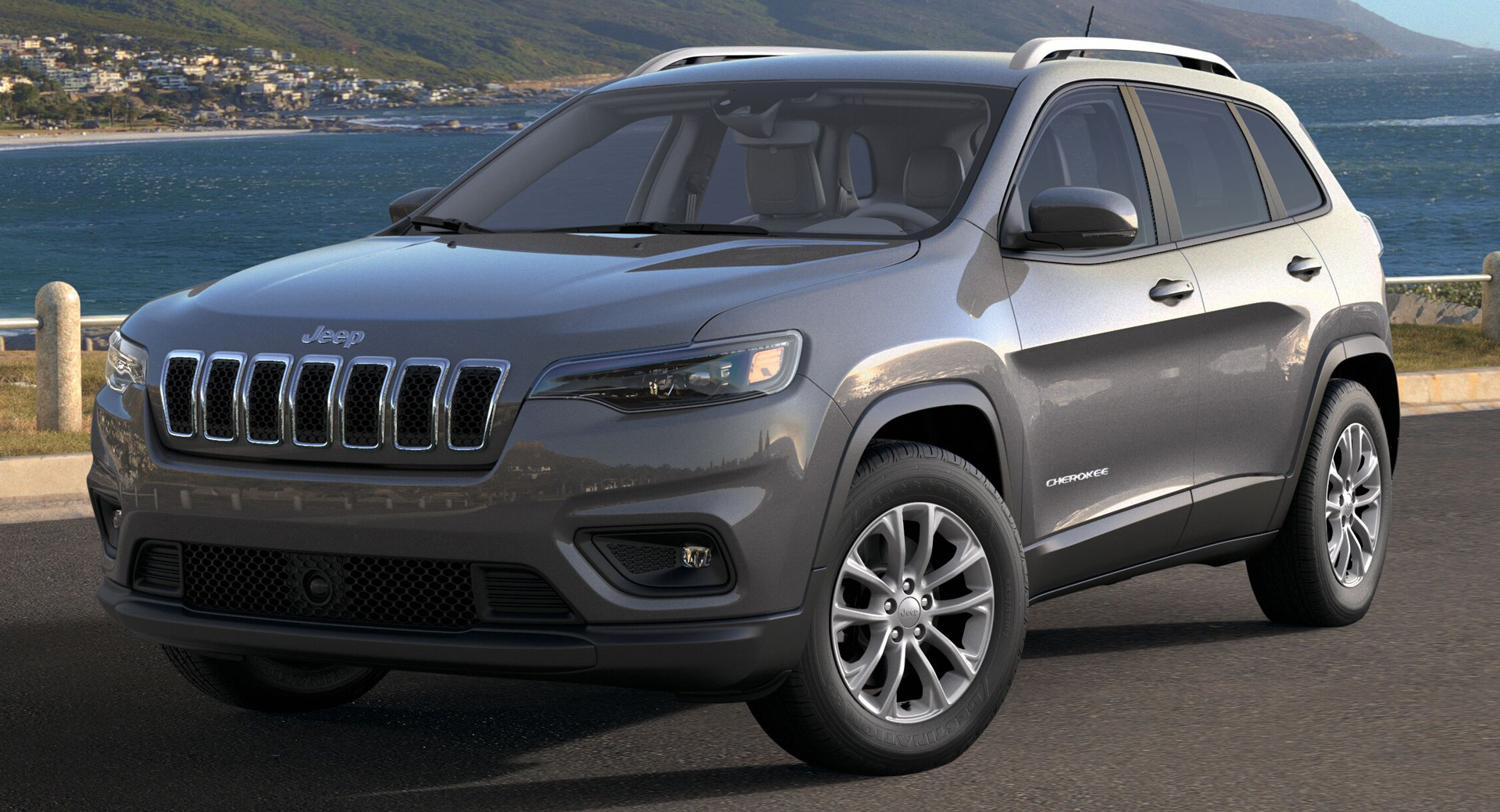
- Automatic Transmissions:
- Chrysler Torqueflite 904/999 (3-speed, 2.5L/2.8L): Solid, but lacks an overdrive.
- Aisin-Warner AW4 (4-speed, 4.0L, 1987-1992): An incredibly reliable and popular automatic transmission, praised for its smooth shifts and durability.
- Drivetrain:
- 2WD: Available across all engine types.
- 4WD: Most desirable. Utilized various transfer cases:
- NP207 (Command-Trac): Part-time 4WD, found in early models.
- NP231 (Command-Trac): Part-time 4WD, standard on most 4x4s. Highly robust and popular for off-road use.
- NP229/NP242 (Selec-Trac): Full-time 4WD options, rare but offered the convenience of driving on pavement in 4WD.
Trim Levels:
Comanches came in various trim levels, often mirroring the XJ Cherokee:
- Base/Custom: Basic work trucks, often 2WD with the 2.5L engine.
- Pioneer/Chief: Mid-range trims, offering more creature comforts and often 4WD.
- Laredo: Upscale trim with chrome accents, nicer interiors, and usually the 4.0L engine.
- SportTruck: A more basic, sport-oriented trim often with the 4.0L.
- Eliminator: The top-tier sporty trim (1988-1992), featuring unique graphics, blacked-out trim, bucket seats, and almost always the 4.0L engine. Eliminators are among the most sought-after variants.
Bed Lengths:
- Short Bed (6 feet): More common and often preferred for maneuverability.
- Long Bed (7 feet): Offers more utility for hauling but less common.
What to Look for When Buying a Jeep Comanche: A Buyer’s Guide
Purchasing a vintage vehicle like the Comanche requires a thorough inspection. These trucks are over 30 years old, and age, use, and climate will have taken their toll.
Critical Inspection Points:
-
Rust, Rust, Rust! This is the number one killer of Comanches.
- Frame: Check the rear frame rails, especially where they meet the unibody and around the leaf spring mounts.
- Floorboards: Inspect both front and rear.
- Rocker Panels: Prone to rust, particularly behind the front wheels.
- Bed: Check the bed floor, inner wheel wells, and especially the bed supports underneath. The unibody/frame transition area is also a common rust spot.
- Fenders/Doors: Inspect for bubbling or holes.
- Windshield Frame: Rust around the windshield can lead to leaks.
-
Engine Health:
- 4.0L: Listen for knocking, excessive valve train noise, or unusual sounds. Check for oil leaks (rear main seal is common but not always severe). Ensure the cooling system is in good shape (radiator, hoses, water pump). Look for signs of overheating.
- 2.5L: Similar checks.
- All Engines: Check oil condition, exhaust smoke (blue = oil, white = coolant, black = rich fuel).
-
Transmission & Drivetrain:
- Manual: Test all gears, listen for grinding, feel for smooth engagement. Check clutch operation.
- Automatic (AW4): Shifts should be smooth and firm, not harsh or slipping. Check fluid condition (should be reddish, not brown or burnt).
- 4WD System: Engage 4-high and 4-low. Ensure the transfer case shifts smoothly and the front axle engages. Listen for unusual noises during engagement or driving in 4WD. Check for leaks around the transfer case and differentials.
-
Suspension & Steering:
- Leaf Springs: The rear leaf springs are notorious for sagging. Check if the truck sits level.
- Bushings: Inspect all suspension bushings (control arms, sway bar, leaf springs) for cracks or excessive wear.
- Steering: Check for excessive play in the steering wheel. Look for worn tie rod ends, ball joints, and steering box leaks.
-
Electrical System: Test all lights (interior/exterior), gauges, HVAC (heater/AC), power windows (if equipped), and radio. Electrical gremlins can be frustrating to track down.
-
Interior Condition: Dash cracks are common. Check seat upholstery, headliner, and carpet for wear and tear. Water leaks from windshield seals can damage the interior.
-
Documentation: Request service records, receipts for parts, and a clean title. A well-documented history is a significant plus.
Practical Advice for Buyers:
- Bring a Magnet: Use a small magnet to check for body filler over rust spots. If it doesn’t stick, it’s likely filler.
- Cold Start: Always try to see the vehicle started cold to identify issues like smoke or unusual noises.
- Test Drive: Drive on various surfaces, including highway speeds, to check for vibrations, steering issues, and transmission performance.
- Pre-Purchase Inspection (PPI): If you’re serious, especially about a higher-priced Comanche, invest in a PPI by a trusted mechanic familiar with older Jeeps. This can save you thousands in hidden repairs.
- Online Forums: Join online Comanche/XJ Cherokee forums (e.g., ComancheClub.com, NAXJA.org). They are invaluable resources for advice, common issues, and even finding parts.
Pricing Your Dream Comanche: Factors Influencing Value
The price of a Jeep Comanche can vary wildly, from a few thousand dollars for a rough project to well over $20,000 for a pristine, low-mileage, or professionally restored example. Several factors heavily influence its market value:
- Condition: This is the primary driver. A rust-free body, clean interior, and well-maintained mechanicals command a premium.
- Engine: The 4.0L I6, especially the 1991-1992 High Output (HO) version, is the most desirable and fetches the highest prices.
- Drivetrain: 4WD models are generally more valuable than 2WD, especially in regions where off-roading or inclement weather is common.
- Trim Level: Eliminator and Laredo trims typically sell for more due to their features and sportier/luxurious appeal.
- Mileage: Lower mileage generally means higher value, assuming the vehicle has been maintained.
- Modifications: Quality, well-executed modifications (e.g., professional lift, axle upgrades, engine swaps) can add value. Poorly done or extreme modifications can detract.
- Location: Comanches in dry, rust-free climates (Southwest, California) are highly sought after and often command higher prices than those from the rust belt.
- Rarity: Very rare configurations (e.g., diesel, long bed 4.0L Eliminator) can sometimes fetch higher prices to the right collector.
Estimated Price Range Table (for drivable, non-project vehicles):
| Condition | Engine Type | Drivetrain | Estimated Price Range (USD) | Notes |
|---|---|---|---|---|
| Poor | Any | Any | $1,500 – $4,000 | Major rust, significant mechanical issues. Project truck. |
| Fair | 2.5L I4 | 2WD/4WD | $3,000 – $6,000 | Needs work, some rust, cosmetic issues. |
| Fair | 4.0L I6 | 2WD/4WD | $4,000 – $8,000 | Drivable, but needs significant TLC. |
| Good | 2.5L I4 | 2WD/4WD | $6,000 – $9,000 | Minor rust, mechanically sound, daily driver potential. |
| Good | 4.0L I6 | 2WD/4WD | $8,000 – $15,000 | Solid driver, minimal rust, well-maintained. |
| Excellent | 4.0L I6 | 4WD | $15,000 – $25,000+ | Very clean, minimal to no rust, low miles, well-preserved/lightly restored. |
| Pristine | 4.0L I6 HO | 4WD (Eliminator/Laredo) | $25,000 – $40,000+ | Show-quality, perfectly restored or original, low-mileage examples. |
Note: These are estimates and market conditions, specific features, and seller motivation can significantly impact actual sale prices.
Maintaining and Modifying Your Comanche: Tips for Ownership
Owning a Comanche is a rewarding experience, but it comes with the responsibility of proper maintenance and the temptation of modification.
Maintenance Tips:
- Regular Fluid Changes: Engine oil, transmission fluid, transfer case fluid, and differential fluids are crucial for longevity.
- Cooling System: The 4.0L is sensitive to overheating. Keep the cooling system in top shape: flush coolant regularly, inspect radiator, water pump, thermostat, and fan clutch.
- Rust Prevention: If you live in a wet or salty climate, consider annual undercoating and regular cleaning to prevent rust from taking hold.
- Parts Availability: While many mechanical parts are shared with the ubiquitous XJ Cherokee (making them relatively easy to find), unique Comanche body parts (bed, specific trim pieces, rear bumper) can be very difficult and expensive to source. Join online communities for "parts wanted" sections.
- DIY Friendly: The Comanche, like the XJ, is relatively simple mechanically, making many repairs and maintenance tasks achievable for the DIY enthusiast.
Modification Insights:
- Lift Kits: One of the most common modifications for improved off-road capability and tire clearance. Be mindful of geometry changes and potential drivetrain vibrations.
- Tires: Upgrading to larger, more aggressive tires enhances off-road performance and improves aesthetics.
- Engine Performance: Simple bolt-ons like improved air intakes, exhaust systems, and throttle body spacers can offer modest gains.
- Axle Upgrades: Many enthusiasts swap the stock Dana 35 rear axle for a stronger Dana 44 or Ford 8.8 for more demanding off-road use or larger tires.
- Restoration vs. Custom: Decide if you want to restore your Comanche to original glory or build a custom off-road beast. Both paths are rewarding but require different budgets and skill sets.
Challenges and Solutions in Comanche Ownership
While a fantastic truck, owning a Comanche isn’t without its challenges.
- Challenge: Rust. As highlighted, rust is the biggest enemy.
- Solution: Thorough pre-purchase inspection. For existing rust, professional remediation is best, followed by diligent rust prevention.
- Challenge: Finding Unique Parts. Body panels and specific Comanche-only components are scarce.
- Solution: Network on Comanche and XJ forums. Salvage yards (though increasingly picked over for MJs) and dedicated parts suppliers specializing in vintage Jeep parts are your best bet. Be prepared to pay a premium.
- Challenge: Fuel Economy. The 4.0L, while robust, is not known for its fuel efficiency, especially with larger tires or a heavy foot.
- Solution: Embrace it as part of the classic experience. Consider minor tuning or maintenance to optimize what efficiency you can.
- Challenge: Age-Related Wear. Bushings, seals, hoses, and electrical wiring will degrade over time.
- Solution: Proactive maintenance and replacement of wear items. Factor in a budget for these "deferred maintenance" items when purchasing. Learning basic diagnostics and repairs can save money.
- Challenge: Finding Skilled Mechanics. Not all shops are familiar with older, classic vehicles.
- Solution: Seek out independent shops specializing in Jeeps or older 4x4s. Again, online forums can provide recommendations.
Concluding Summary
The Jeep Comanche is more than just a used truck; it’s a piece of automotive history that continues to captivate enthusiasts with its unique blend of utility, capability, and timeless design. Its strong ties to the legendary XJ Cherokee ensure a certain level of parts availability and mechanical familiarity, but its distinct unibody-frame hybrid construction and classic truck aesthetics set it apart.
For those seeking a rugged, character-filled pickup that stands out from the crowd, the Comanche represents an excellent investment in both enjoyment and potential appreciation. While rust and the scarcity of certain unique parts present challenges, a diligent search, a thorough pre-purchase inspection, and a commitment to ongoing maintenance will ensure your Comanche provides years of reliable service and endless adventures. Embrace the quirks, cherish its heritage, and you’ll understand why the Jeep Comanche continues to hold a special place in the hearts of Jeep loyalists and classic truck aficionados alike.
Frequently Asked Questions (FAQ) about Jeep Comanche Trucks
Q1: Why are Jeep Comanches so popular now?
A1: Their popularity stems from several factors: their unique unibody/frame hybrid design, the legendary reliability of the 4.0L engine, excellent off-road capability, distinct classic styling, and their growing status as a rare and desirable vintage truck. Many see them as the "last true Jeep pickup" before the modern Gladiator.
Q2: What is the best engine to look for in a Comanche?
A2: Without a doubt, the 4.0-liter AMC inline-six engine (especially the 1991-1992 High Output version) is the most sought-after. It offers the best balance of power, torque, and legendary durability.
Q3: Are parts hard to find for a Jeep Comanche?
A3: Mechanical parts, especially for the engine (4.0L) and many drivetrain components, are widely available due to sharing parts with the highly popular XJ Cherokee. However, body panels, the truck bed, and specific interior/exterior trim pieces unique to the Comanche can be very difficult and expensive to find.
Q4: Can a Jeep Comanche be a reliable daily driver?
A4: Yes, a well-maintained Comanche, particularly one with the 4.0L engine and AW4 automatic transmission, can be a surprisingly reliable daily driver. However, remember it’s a 30+ year old vehicle, so occasional maintenance and repairs will be necessary. Fuel economy, especially with the 4.0L, won’t be stellar.
Q5: What’s the biggest issue to look out for when buying a Comanche?
A5: Rust is the single biggest concern. Inspect the frame rails (especially rear), rocker panels, floorboards, and bed supports thoroughly. Rust can be extensive and costly to repair.
Q6: How much should I expect to pay for a Jeep Comanche?
A6: Prices vary widely based on condition, engine, drivetrain, and location. A project truck might be $1,500-$4,000. A good, drivable 4.0L 4×4 can range from $8,000-$15,000. Pristine, low-mileage, or professionally restored examples (especially Eliminator trims) can command $25,000 or more.
Q7: Are all Jeep Comanches 4×4?
A7: No, the Jeep Comanche was available in both 2-wheel-drive and 4-wheel-drive configurations. While 4×4 models are generally more desirable and command higher prices, 2WD models exist and can make good light-duty trucks.

